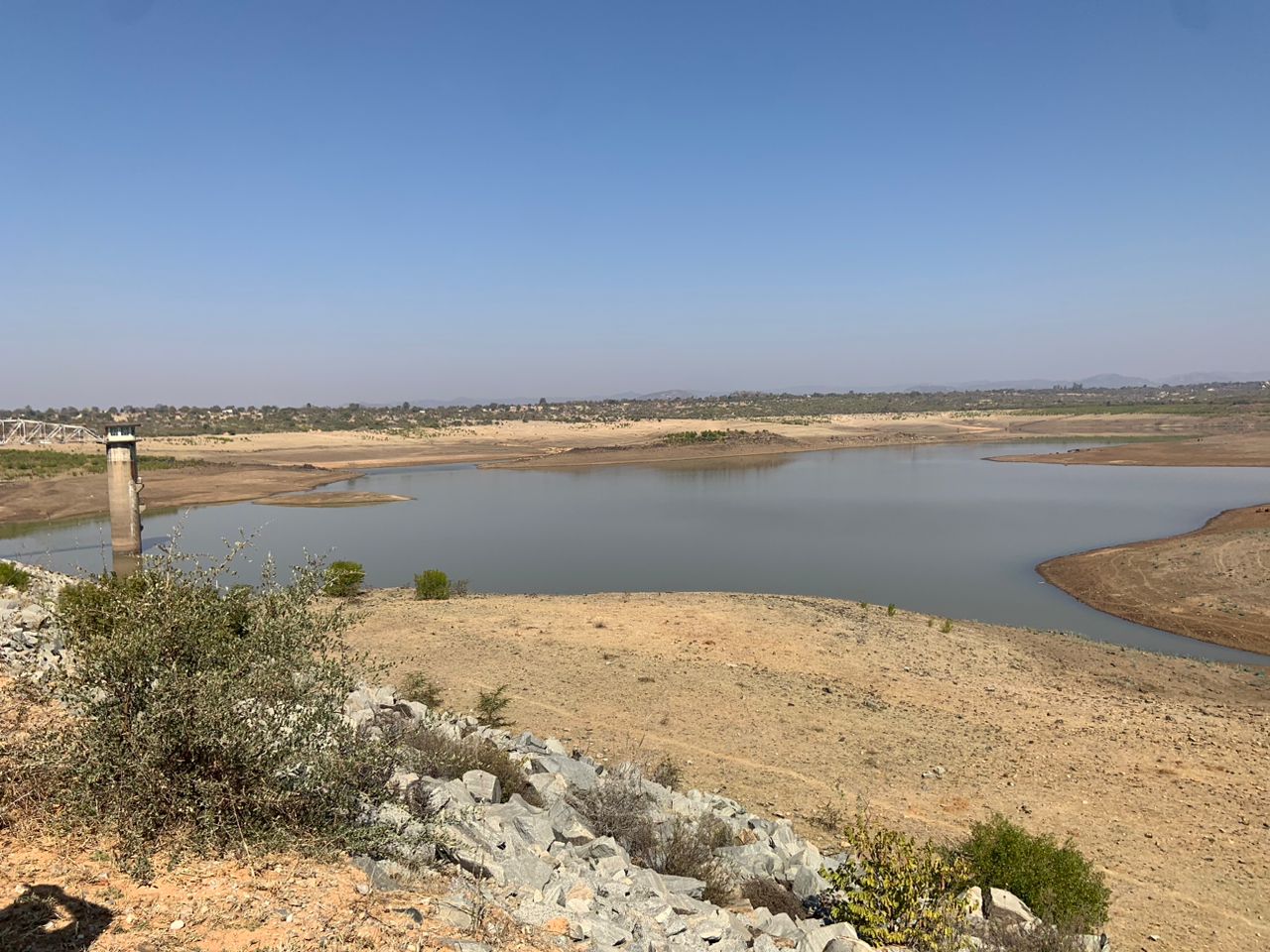With water catchments severely damaged by illicit gold mining and reservoirs at dangerously low levels, the City of Bulawayo is on the verge of a catastrophic water crisis.
Zimbabwe’s second-largest city is on the brink of a water disaster, with its supply dams sitting at historic lows of just below 32 percent of their capacity.
Mayor David Coltart said this situation demands immediate attention and collective action to prevent a looming catastrophe for Bulawayo and its residents, who he lamented are in a “state of denial” about the reality of the water crisis.
During a tour of the Mzingwane project site on Friday, the mayor highlighted the gravity of the water situation and called for immediate action to conserve water and address infrastructure challenges.
“Let me start with the bad news. We face an absolute crisis in the city at present,” Coltart said.
“If you go to the actual dam at Umzingwane, you will see it is empty. It is sitting at 2.3 percent. In other words, the old pumps are still working but they are pumping nothing because that dam is empty.”
The situation is exacerbated by the devastation caused by gold panners upstream of Mzingwane, lamented the mayor.
“If you take a drone, you will see the catchment in many areas of Mzingwane has been devastated by gold panners. They have dug big trenches in the river system. Even if it rains this coming season, the first light rains will not get into this dam; they will go into these trenches. It is an absolute crisis,” Coltart explained.
Currently, Bulawayo’s dams are sitting at just below 32 percent of their capacity, far below the expected 70 percent even after a poor rainy season, said the mayor.
“If we have another rainy season like the last one, our city will run out of raw water, aside from the Nyamandlovu aquifer,” warned Coltart.
The mayor stressed the urgent need for public cooperation in minimizing water usage.
“We face an absolute catastrophe and we need to explain to the public what their role is in trying to minimize water usage. Our Director of Engineering Services in Bulawayo, Engineer Sikhumbuzo Ncube, and his team have been working tirelessly to repair leaks and reduce the loss of raw and purified water.”
Coltart noted that there is a state of denial within the city regarding the severity of the water crisis.
“People are still watering their gardens, and industry has not been fully cut off. We don’t fully appreciate yet how grave the situation is, and we desperately need the press to explain how serious this is,” he said.
The mayor also underscored the critical condition of the city’s water sources.
“Mzingwane Dam has been decommissioned. Lower Ncema and Upper Ncema, which were not visited during the tour, are both going to be decommissioned by the end of October. This means by the end of October, Bulawayo will be reliant on Mtshabezi, Insiza, and Inyankuni,” he said.
“Inyankuni Dam is currently sitting at 22 percent.”
Coltart said there is need to upgrade the Mtshabezi and Insiza pipelines and for the government to provide the promised funds (US$14 million) urgently.
“We need to have a sense of urgency. My appeal is that this is not a political issue; water is for everyone, and we all need to work together – council, government, and technical committees. The press has to illustrate the gravity of this crisis,” he stressed.
As of July 24, 2024, the combined storage capacity of the dams supplying Bulawayo stands at 31.45 percent.
The city continues with a 120-hour water-shedding program per week, meaning residents only receive water two days a week.
The average daily water consumption is 106.5 ML/day, against a production of 105.6 ML/day. Efforts to meter water received from Nyamandlovu are currently underway.

